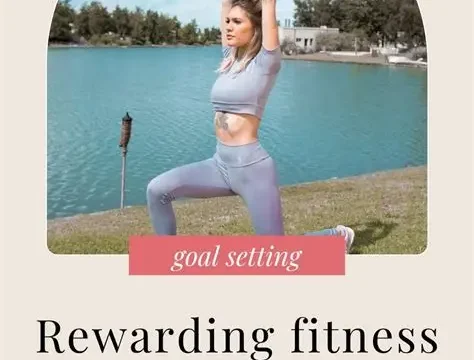Finding fun and engaging ways to stay fit and healthy can sometimes be a challenge, especially when life feels busy or routines start to feel repetitive. One exciting way to bring energy, joy, and movement into your day is through quick music games. These games combine the power of music with playful physical activity, making exercise feel less like a chore and more like a party. Whether you’re playing solo or with friends and family, quick music games can add a burst of fun while keeping your body active.
Music has a unique ability to lift spirits, motivate, and encourage movement. When paired with simple games, it transforms everyday exercise into a playful experience. The rhythm and beat invite your body to move naturally, while the game element challenges your coordination, agility, and reflexes. This combination supports your physical health and makes staying active feel enjoyable.
One classic music game that is easy to play and always fun is the musical freeze dance. The rules are simple. When the music plays, you dance, move, or wiggle however you like. When the music stops, everyone freezes in place. If someone moves while the music is paused, they are “out” or have to perform a silly task before joining back in. This game encourages bursts of energetic movement and moments of control and balance. It’s great for all ages and can be done indoors or outside.
Musical chairs is another well-loved game that keeps participants moving quickly and thinking on their feet. Set up chairs in a circle, one fewer than the number of players. Play music while everyone walks around the chairs, and when the music stops, everyone rushes to find a seat. The player left standing is out. This game promotes quick reflexes, agility, and friendly competition, all while incorporating fun and laughter.
If you prefer games that combine rhythm with coordination, try rhythm clapping games. These games involve creating and copying rhythmic patterns by clapping hands, tapping legs, or snapping fingers in time with music. You can take turns making up new rhythms, encouraging creativity and listening skills while also getting your body moving. This kind of game is excellent for warming up or cooling down during a workout.
For a more active option, set up a simple obstacle course in your living room or backyard and use music as the timer. For example, when the music plays, you move through the course by hopping, skipping, crawling, or running. When the music pauses, you freeze or complete a specific pose like a balance stand or stretch. This type of game keeps your heart rate up and engages different muscle groups, all while adding a playful twist to your fitness routine.
Jump rope games with music offer another fantastic way to mix fitness and fun. Skip to the rhythm of your favorite songs or challenge yourself to jump faster or slower as the music changes tempo. You can also invent jump rope rhymes or challenges set to music, like doing a certain number of jumps before the chorus or switching foot patterns during the verse. Jump rope is excellent for cardiovascular health, coordination, and endurance.
Playing quick music games can be especially beneficial because they don’t require long sessions or complex equipment. Even a few minutes of dancing, clapping, or moving to music can raise your heart rate, improve mood, and strengthen muscles. These games fit perfectly into short breaks during the day, making it easy to stay active even with a packed schedule.
Another great advantage of music games is their social aspect. Whether you’re playing with family, friends, or neighbors, these games create opportunities to connect and share laughter. Moving and having fun together promotes not only physical health but also emotional well-being. The shared experience builds bonds and helps reduce feelings of stress or isolation.
For those who enjoy a little technology, there are many apps and online platforms offering music-based fitness games. These interactive tools can guide you through quick sessions set to upbeat music and even track your progress. Many of these apps feature challenges and rewards that keep motivation high and the experience engaging. However, you don’t need digital devices to enjoy music games. The simplest playlists and your own creativity are enough to spark movement and fun.
Music games can also be adapted to fit any fitness level or physical ability. For example, if jumping or running is difficult, focus on seated clapping games, arm movements, or gentle swaying. The key is to listen to your body and choose movements that feel good while keeping you active. Creative adaptations make it possible for everyone to join in and benefit from the joy of music and movement.
Incorporating quick music games into your daily routine encourages a positive mindset about fitness. When exercise feels like play, it becomes something to look forward to rather than a task to complete. This mindset shift is important for long-term health because it supports consistency and helps you develop a lifelong love of movement.
If you’re unsure where to start, try setting a daily or weekly challenge. Pick a favorite song and create a short music game routine around it. It could be five minutes of freeze dancing after work, a quick round of musical chairs with your family, or a rhythmic clapping game during a break. As you become more comfortable, you might invent your own games or invite others to join you. The possibilities are endless, and every little bit counts.
Quick music games are also wonderful tools for children. They encourage kids to move in joyful, expressive ways that develop their coordination, balance, and social skills. When adults join in, it sends a powerful message that fitness can be fun at any age. Plus, playing these games together strengthens family connections and creates lasting memories.
Finally, don’t underestimate the power of music itself. Creating a playlist of your favorite energetic songs can be a motivating factor to get moving. Upbeat tunes with strong rhythms are especially effective at encouraging movement. Whether you choose pop, jazz, classical, or world music, the important thing is to select songs that make you want to move.
In summary, quick music games are an enjoyable, flexible, and accessible way to stay fit and healthy. They combine the benefits of physical activity with the joy of music and social interaction. By incorporating these games into your routine, you can boost your cardiovascular health, improve coordination, and brighten your mood—all while having a great time.
So next time you feel like moving but don’t want to commit to a long workout, turn on your favorite tunes and start a quick music game. Whether dancing, clapping, jumping, or freezing, you’ll be giving your body the gift of joyful movement and your mind a refreshing break. Fitness has never been so fun!





